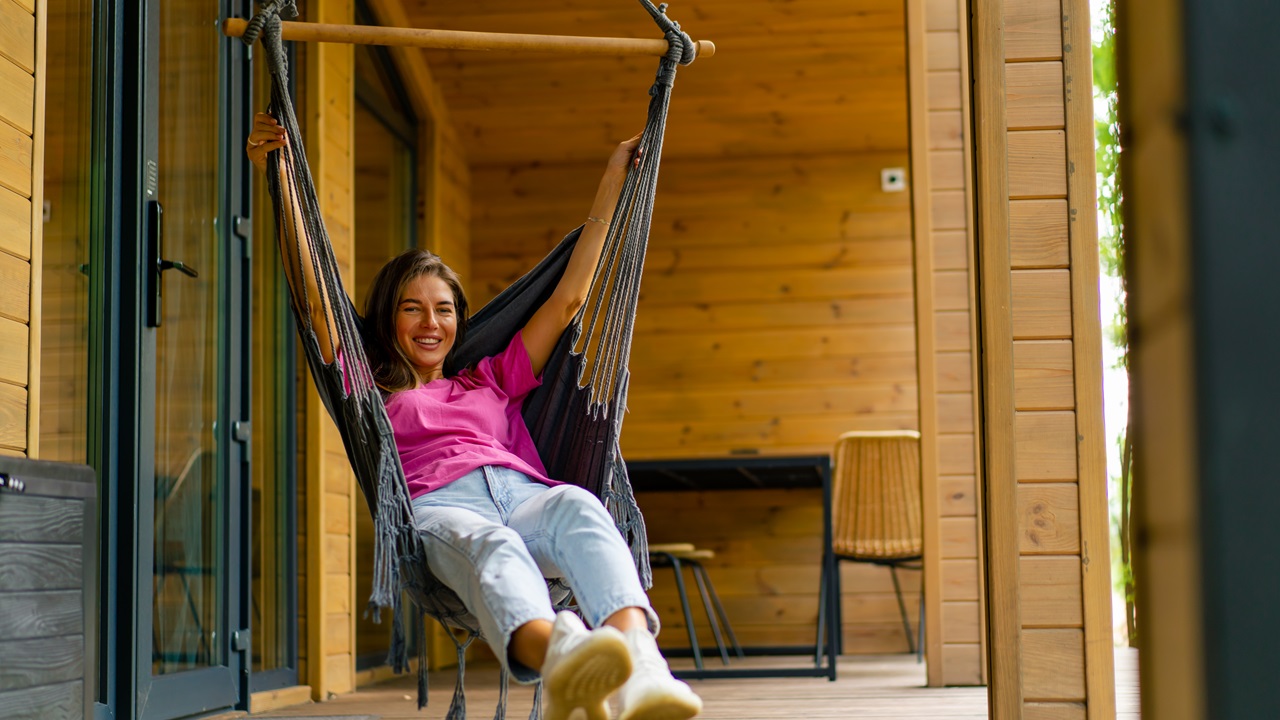Hammocks are an indispensable item in the modern camper’s checklist, and understandably so. With a rich history tracing back to the Mayan civilization, these chairs have garnered significant attention over the years for their ability to infuse a magical vibe into any outdoor experience.
While originally associated with elite campers, hammocks now come in diverse sizes and designs to suit every budget. The chairs aren’t only suited for camping either. You can install them in your backyard or patio to create a dedicated lounging or reading spot.
However, choosing the perfect reclining hammock chair can be daunting for beginners. While there’s a plethora of options to pick from, you want a chair that suits your taste and preference.
To help you, we’ve prepared a rundown of the top factors to consider when choosing one. Read on!
Top Factors To Consider When Shopping For The Best Reclining Hammock Chair
1. Material
Hammock chairs can be made from various fabrics, including polyester, cotton, nylon, and bamboo. Each material has its defining pros and glaring drawbacks.
Nylon and polyester are a top recommendation if you’re looking for a durable, weather-resistant reclining hammock chair. But if comfort matters more, consider softer and more breathable cotton.
Bamboo is nearly as breathable as cotton, except it’s more sustainable.
2. Portability
Portability is one of the key areas of distinction between traditional hammocks and reclining hammock chairs.
Hammock chairs are comparatively easier to assemble and disassemble, making them excellent for outdoor adventures like camping and road trips.
But even within the ranks of reclining hammock chairs, you’ll find that certain chairs are more portable than others. The difference comes down to a product’s overall size, weight, and suspension system.
3. Size
Hammock chairs come in diverse sizes, depending on the number of intended users.
Some larger varieties measure up to 6 feet. Such chairs are designed to provide a chill hangout for families.
Mid-sized options can comfortably accommodate two people, making them ideal for couples. If you’d rather lounge in a hammock by yourself, then smaller varieties would suit you best.
4. Length
A hammock’s size relates primarily to its width, while its length refers to the longitudinal span. Most hammocks are long enough to accommodate fairly tall users.
But if you’re extra tall and fear you might miss out on the right hammock, look for a product two feet longer than your height.
5. Weight Capacity
Hammock chairs are designed to accommodate leisure seekers of varying weights. Pick a chair with a weight limit slightly larger than the intended users.
In the case of family hammocks, the trick is to go by the total weight of the would-be users. Suffering a freak accident while swinging in a hammock isn’t how you’d wish to spend your leisure time.
6. Suspension System
Some hammock swing chairs come with ropes that let you hang them from ceiling hooks, tree branches, or outdoor beams. Others hang from stands.
Hanging a hammock chair from high beams is popular for its health benefits, like improving posture and reducing stress. If there are no nearby trees or you have young children, a hammock with a stand is a safer, more stable option that also promotes better spinal alignment and circulation for overall health.
7. Comfort and Support
Comfort is the whole idea of reclining hammock chairs. These hammocks typically feature a reclining seat engineered to support the back.
Before purchasing a hammock chair, research its maximum reclining angle to ensure it aligns with your lounging needs. This is particularly important if you have lower back pain.
You can customize your reclining hammock chair further by sliding it on the diagonal to create a flatter surface, allowing you to spread out more comfortably over the fabric.
8. Hanging Space
Where and how you hang a hammock chair also impacts your comfort. So, the first thing is to ensure there’s sufficient hanging space. If such a space doesn’t permit itself, you may be better off with a stationary hammock.
The next step is to set up your hammock in a place free from obstacles, including nearby posts, perimeter walls, or a water mass below. Experts recommend creating a 12-foot allowance on either side of the chair and ensuring the two suspension points are at least 5 feet above the ground.
As for the sag, aim for 30 degrees from horizontal. While a deeper angle keeps you from falling out of the hammock by lowering its center of gravity (CoG), it may make you feel trapped in the cocoon.
9. Weather Resistance
Most hammock chairs are meant to be used outdoors. Therefore, they should be constructed from the most weatherproof fabrics available. If your hammock will be permanently exposed to the elements, ensure it’s made from fabrics that can withstand rain, humidity, and ultraviolet (UV) rays.
Color is another key consideration if you’re looking for a hammock chair for outdoor use. Lighter shades look especially stunning in sunlight. Besides, their superior reflective properties allow them to withstand UV damage.
However, remember to choose a color that complements your outdoor ambiance. Neutrals and earthy shades are highly recommended for their ability to blend seamlessly into the natural environment. They also hide dirt incredibly well, making them easier to wash and maintain.
Wrap Up
The hammock market teems with products designed to suit different leisure needs. You only need to define the features you want in these delightful chairs before hitting the stores.
By following the above tips, you can get a comfortable, durable, and properly sized reclining hammock chair for your next vacation.
Want to unlock greater wellness?
Listen to our friends over at the Wellness + Wisdom Podcast to unlock your best self with Drew Canole of Organifi:









 What Are the Most Common Health Benefits of Coffee?
What Are the Most Common Health Benefits of Coffee?